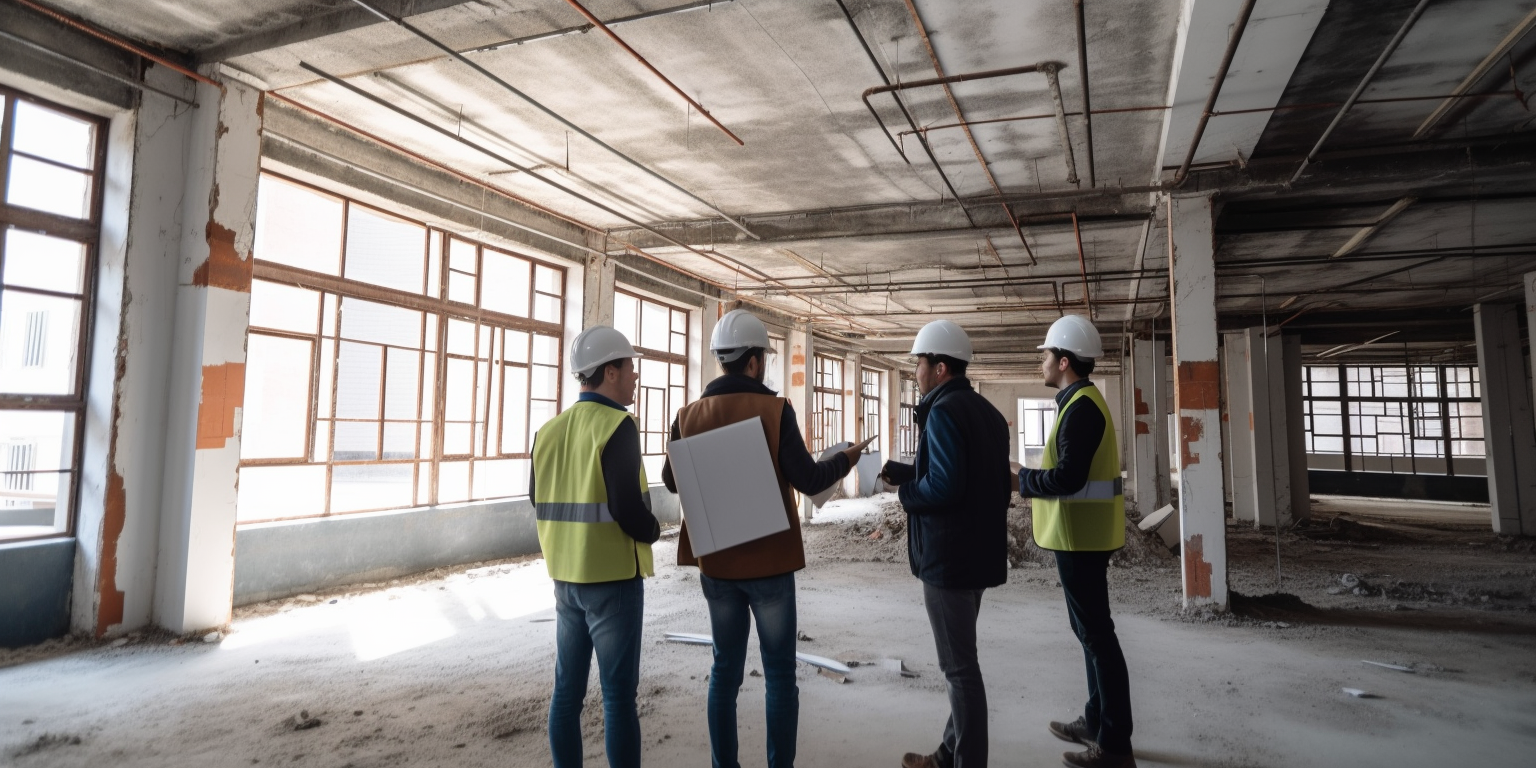What is a Fire Safety Project?
A Fire Safety Project is an effort to reduce the risk of fires occurring in a particular area. It typically involves installing or improving existing fire prevention systems, such as fire alarms and sprinklers, as well as educating the public on how to prevent and respond to fires. Fire safety projects can also involve enhancing buildings and structures to reduce the spread of fire or establishing emergency evacuation plans.
In many cases, a Fire Safety Project will include updating building codes, improving communication between local authorities and fire departments, and training staff on how to respond to potential emergencies. This might include ensuring that all staff are aware of their roles during a fire and know what kind of first aid training may be required. Additionally, it should ensure that all staff understand the importance of following proper safety protocols when dealing with fires.
Other components of a Fire Safety Project may involve developing public awareness campaigns about the dangers associated with fires and providing education sessions so people can learn about how to protect themselves if a fire were to occur in their community or workplace. Additionally, it could involve assessing current buildings for potential safety improvements and conducting regular inspections for existing systems.
Overall, a Fire Safety Project is an important initiative for any community by helping reduce both the risk of fires occurring in the first place and minimizing damage caused by them should they occur.
Who can businesses consult for Fire Safety Projects?
Businesses looking to undertake a Fire Safety Project should consult licensed professionals such as fire safety engineers, designers, and consultants. These professionals possess the specialized expertise needed to identify any potential fire hazards associated with a building or property and develop measures to prevent and mitigate them. Additionally, these licensed professionals can help businesses stay up-to-date with all applicable fire safety regulations and codes, ensuring full compliance.
Fire safety engineers are able to design comprehensive fire safety strategies tailored to meet the needs of each individual business. They can also assist in creating evacuation plans in order to ensure an orderly escape from the premises in case of an emergency. Fire safety designers have the knowledge and experience to create aesthetically pleasing fire protection systems that still meet government standards and provide adequate fire protection for customers and employees.
Finally, fire safety consultants are often integral in helping businesses implement their strategies by providing implementation advice, inspections, staff training sessions, and more. These consultants can also help businesses develop pre-fire planning documents which outline specific procedures for responding quickly and efficiently in cases of fires or other emergencies.
Things to consider when improving existing fire prevention systems
When considering ways to improve existing fire prevention systems, there are a number of important factors to consider. Firstly, the system should be designed to detect fires early in their development so that they can be quickly and effectively extinguished. This means investing in sophisticated detection methods such as infrared imaging and smoke detectors that are able to alert authorities even before visible smoke is present. Secondly, the system should enable rapid response from emergency services so that fires can be addressed promptly and without delays. This may involve the implementation of automated systems that enable fast communication and coordination between firefighters, police officers and other relevant personnel.
Thirdly, an effective fire prevention system should include clear protocols for occupants on how they should respond when fires start or when alarms go off. This is particularly important in high rise buildings where evacuation routes should be clearly marked and accessible by everyone who is evacuated from the building. Additionally, it is also critical to ensure that any fire safety equipment installed is regularly serviced and inspected to make sure it remains in good working order at all times. Finally, it is important to educate occupants on how to use fire safety equipment like fire extinguishers correctly if they need to tackle a blaze themselves before professional help arrives.
Training staff on Fire Safety
Fire safety training is an important component of any workplace safety program. It is essential for employers to provide detailed information on fire prevention, detection, evacuation and suppression practices to their staff. This should include instructions on the proper use of fire extinguishers and other emergency equipment as well as identification of potential sources of ignition. Additionally, employers should familiarize their staff with local regulations related to fire safety such as building codes or requirements for smoke detectors or sprinkler systems in certain areas.
During a fire safety training session, it is essential that employees are made aware of their duties during an emergency situation. They should be informed of their roles in evacuating the premises safely and quickly if a fire occurs and also be responsible for ensuring the maintenance of smoke detectors, extinguishers and other emergency equipment. Regular refresher courses on detecting signs of danger and responding properly should be conducted to ensure that employees are up-to-date with preventive measures such as proper storage of combustible materials and regular inspection protocols.
To further strengthen knowledge about fire safety among staff, employers can encourage employees to take part in practice drills which simulate real emergency scenarios so they can become more familiar with their responsibilities during an actual crisis. Moreover, organizations may also consider developing simulation exercises which involve assigning particular roles from the evacuation plan to different individuals within the team so everyone understands their individual role in preventing fires or responding to them effectively.
By taking these steps, employers can help create a safe working environment by increasing employee awareness about fire safety risks and procedures so they are better prepared to respond appropriately when faced with emergencies.
Industry standard on inspections
Fire protection systems must be inspected regularly to ensure they continue to operate safely and efficiently. According to the National Fire Protection Association (NFPA), an annual inspection should be conducted, with additional inspections taking place according to specified frequency guidelines. Qualified technicians should inspect all fire protection system components, including automatic sprinkler systems, standpipe systems, fire alarm systems, smoke control systems and special hazards extinguishing systems. Components should be visually inspected for proper operation and any damage that could affect functionality. In addition to this, technicians should test pressure gauges; calibrate control valves; examine piping connections; check water supply pressure; inspect sprinkler heads for obstructions and lubricate pump motor bearings.
Regular maintenance is critical for life safety applications such as fire protection systems. The NFPA recommends that a certified technician who understands the application of related codes and standards conducts these inspections. These individuals should possess knowledge of the inspection process as well as experience in installing, maintaining and servicing fire protection equipment.
Overall, regular inspections of fire protection systems are essential for ensuring a safe environment and reducing risk of failure or accidents. Technicians must adhere to NFPA codes and standards when conducting these inspections to guarantee optimum safety at all times. Ensuring compliance with these regulations is vital in keeping occupants safe from potential harm in case of a fire emergency.
How software solutions can support Fire Safety Projects
Fire Safety Projects can utilize software solutions in its implementations. Sophisticated technology can help prevent fires and mitigate the destruction caused by them by providing emergency personnel with vital information in real time.
Computer-aided detection (CAD) systems are designed to identify or predict fires before they start. These systems use sensors to detect smoke, heat, or other indicators of a potential fire before it ignites and alert personnel accordingly. CAD systems enable firefighters to respond more quickly and accurately, and may even be able to suppress some fires before they grow out of control.
Advanced analytics software can also help to prevent fires from occurring in the first place by providing predictive modeling capabilities that allow firefighters to identify potential sources of ignition or places where a fire might start. This type of software can also provide insights into possible causes and how best to mitigate them, helping firefighters make better informed decisions about how to keep their communities safe.
Fire safety management software is an important part of any comprehensive fire safety plan as it enables an organization or community to manage all aspects of fire safety from one centralized platform, including monitoring risks, conducting drills, managing response teams, documenting incidents and more. This type of software helps ensure that all stakeholders are on the same page when it comes to fire safety protocols within any given organization or community.
Software solutions for Fire Safety Projects are vital for ensuring that people stay safe from the threat of fire no matter where they live or work. With these tools in place, organizations can protect lives, property, and infrastructure while minimizing the disruption caused by unexpected events like a dangerous fire outbreak.



